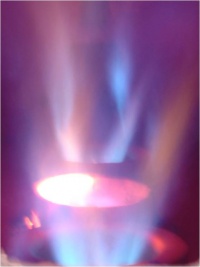Process burner: Difference between revisions
(Updated the page to the more recent formatting style) |
(Added some more links under the "Internal Links" section) |
||
| Line 19: | Line 19: | ||
=Internal Links= | =Internal Links= | ||
*[ | *[https://wiki.opensourceecology.org/wiki/Open_Source_Metallurgy_Construction_Set#Torches These Pages on Open Source Gas Torches/Burners (For forges/furnaces in this context) ] | ||
=External Links= | =External Links= | ||
Revision as of 02:21, 22 October 2020
Basics
The process burner is widely used in various sections through a complete crude oil refinery process.
For example, there are process burners for CDU (atmospheric crude oil distillation unit) and VDU (vacuum distillation unit), process burner for hydrogenation, delayed coking, reformer, and FCC, etc.
The low NOx process burners are more popular than the conventional burner due to strict environmental protection concern. The low Nox process burner has less pollutant emits, thanks for the advanced technology such as the staged combustion technology.
Unlike other burners, the process burner is specially used for furnace heating in crude oil refinery, petrochemical industry, and chemical industry.
Besides the main body, a process burner has many spare parts, such as gas gun, oil gun, pilot, refractory bricks, ventilation door, electronic ignitor, ignitor control cabinet, flame detector, peep hole, and metal hose.
Due to the high working temperature, the process burner images are largely the burning flame images. And the professionals are able to tell a well-working process from a poor-working process by the flame color and status.
The process burner classification is also based on the flame. According to the application that the process burner is used for, you may find the process burner with flat flame or round flame.
